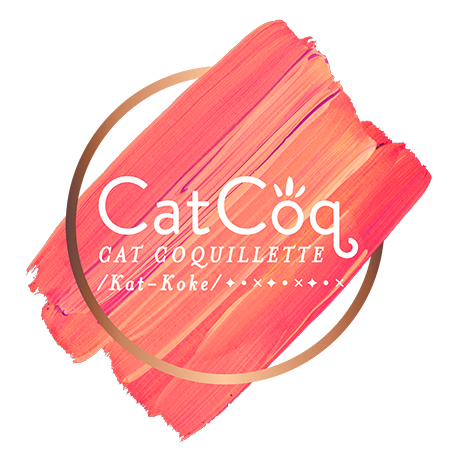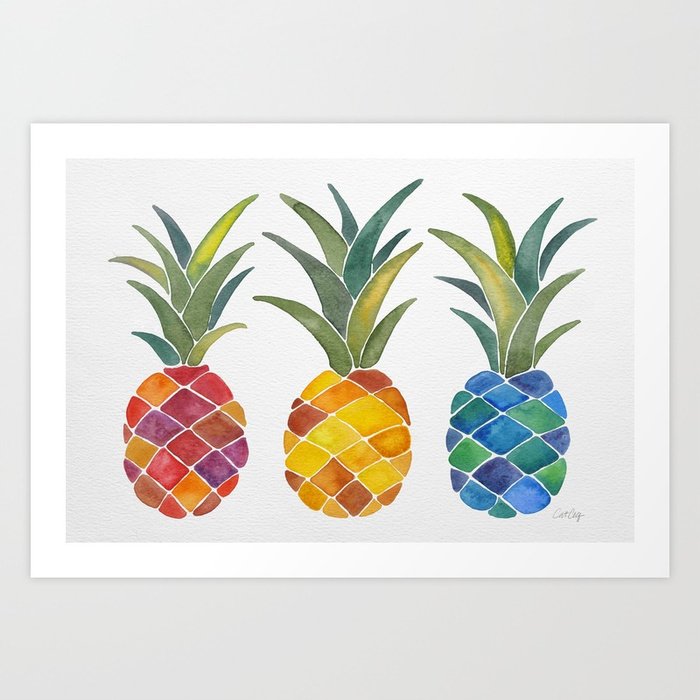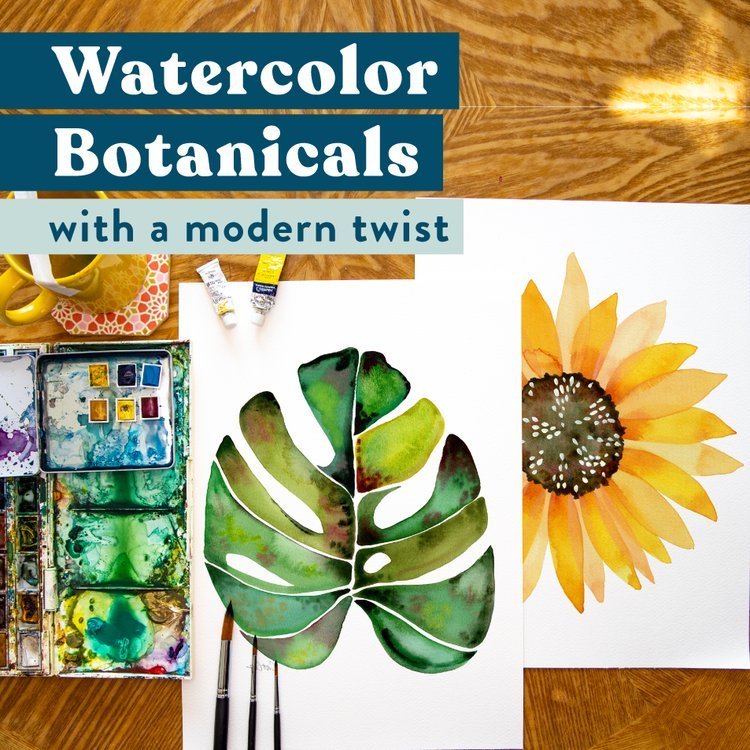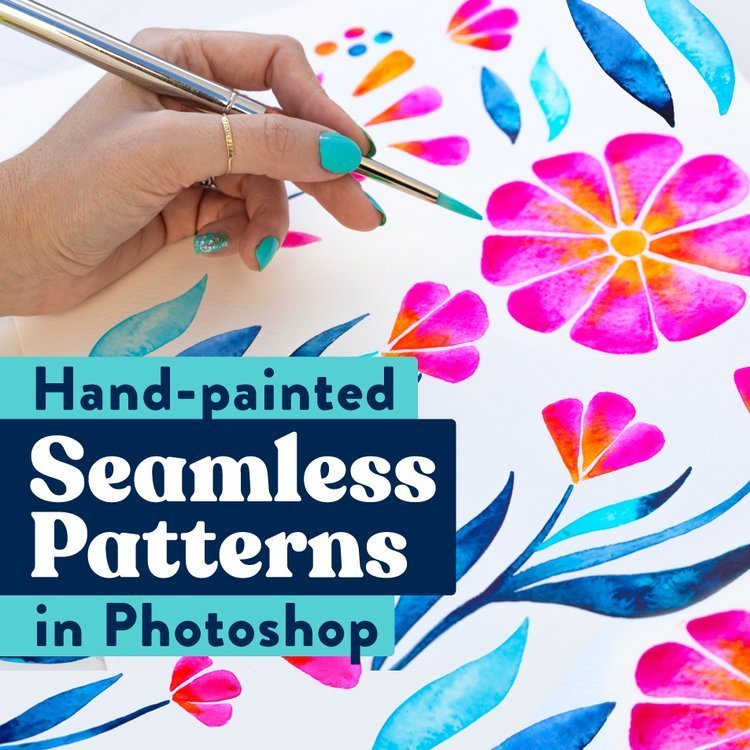How to Decide What to Draw
Have you ever stared at a blank canvas and wondered, “What the heck should I draw?!” I know I have! At some point, all artists have sat in front of a blank page wondering what motif they should fill it with. In this blog post, I’ll share my tried and true tips for deciding what to draw when you’re feeling a creative block. If you’re looking for drawing ideas, read on and I’ll do my best to help you get un-stuck!
1) Seek visual inspiration
One of the best ways to jump-start your creativity is to look at other artists’ work. I love to go to nearby museums to gather inspiration and take tons of reference photos. did that with this design, inspired by a section of a painting.
The best part about getting inspired by paintings you see in a museum? No copyright violation issues if the original artwork is old enough. (70 years past the author's death.) So since this painting that I borrowed inspiration from was originally painted in 1414, copyright issues are no problem.
When you see something that catches your eye, ask yourself what it is about that piece that you like. Take photos of the pieces that pique your interest and use that to guide your next illustration.
If museums aren’t your thing or if you’re looking for more specific drawing ideas, try browsing Pinterest, art blogs, or Instagram for images that interest you. Just know that you’ll likely need to be more aware of copyright issues if you go this route. Use that visual inspiration as a guide for choosing a motif, but don’t copy it to the letter.
2) Participate in Art Challenges
A fabulous way to get creative inspiration for what to draw next is to participate in art challenges. I host a weekly art challenge called #CreateWithCatCoq where I send out a drawing prompt to my newsletter subscribers every single week.
One of the biggest lessons I’ve learned as I’ve built my creative business is that the best way to reach your goals is by taking consistent action. Whether your goal is to start a creative business, to improve your skills, or just to have fun being creative, taking consistent action is going to take you there. Plus, participating in challenges like this can help you get connected with other creatives from all over the world!
Want to get my weekly art prompts delivered straight to your inbox? Sign up here!
3) Draw inspiration from your own life
Your life experiences are a goldmine of material to draw from. From the mundane to the momentous, there are plenty of things you can use as drawing ideas. My biggest inspiration for my artwork has been my travels. Travel-inspired motifs have been a staple of the CatCoq brand for years, and I am continually inspired by travel (and the animals I meet when I travel 😉) to this day.
I painted these llamas back in 2015 after a trip to Peru. This is still one of the best sellers in my profile!
This next illustration combined two travel-related muses. For the cat motif, I was inspired by an adorable tuxedo cat named Oreo who was my neighbor when I was traveling in Montenegro. She and her family spent their days sunbathing on my balcony and I knew I had to include her in one of my illustrations! The rainbow design of this piece was inspired by my time living in Mexico. One of my favorite Mexican illustration styles is their colorful Otomi embroidery. (Rainbows AND animals? I’m in.) And thus, this illustration was born!
Travel is a fantastic source of inspiration, but there are so many other areas of your life that can inspire you. Start looking at ordinary objects around your house as potential motifs. You can even use your grocery haul as inspiration for your next painting. I’ve done this on many occasions and I have a huge portfolio of food paintings. The sky is the limit when it comes to everyday objects that can inspire you. All it takes is shifting the way you view things to start to notice what inspires you in your surroundings.
Even events or chats with family and friends can bring inspiration if you’re looking for it. I illustrated this retro sun for my sister-in-law’s baby shower invitations, and it has become one of the top sellers in my portfolio!
4) Track Trends
As a professional surface designer, I’m always keeping an eye out for emerging trends. When I’m feeling stuck I often reference what’s trending and create art based on that. Some of the top trends that have been emerging at the time of writing this post (2022) are Y2K/90s Nostalgia, Mushrooms, and Checkered Patterns, so I use those and other emerging trends to guide my artwork.
If you want to learn how to track trends, I share an in-depth guide in this blog post. If you’re looking for a trend you can always count on, check out the Pantone color of the year. Color forecasting is a huge part of keying into upcoming trends, so keeping an eye on the Pantone color of the year and incorporating it into your portfolio is an easy way to stay on top of trends and create a little inspiration for your next color palette.
5) Push Through the Fear of a Blank Page
Sometimes you may have an idea of what you want to draw but just aren’t sure where to start. When I have an idea stuck in my head and can't quite figure out how to get it onto paper, it's usually because I'm afraid of messing it up.
What works for me is to just dive headfirst into sketches, knowing that my first few are going to look pretty bad. Don’t be afraid of a bad sketch. After all, these are just for you! Sometimes you just need to work out the kinks before you can get to the good stuff.
This is why my initial thumbnail sketches are always pretty sloppy and loose. If I concentrate too hard on perfection, I get stuck. The purpose of thumbnail sketches is to get a good variety of compositions down so you can see visually what you'd like to proceed with and finalize for the final sketch.
When you’re working on your thumbnail sketches looking at reference photos will help you out a lot. For example, if I wanted to paint a leopard, I'd start by pulling up Google Images or Pinterest with a search for leopards and get an idea of how the body looks in different poses. I like looking at silhouettes for animals, too. It always helps me get the basic form down on the page. And, if you’re using a digital drawing tool you can even trace over your reference photo right on your tablet!
6) It’s OK to Paint Something Simple
The last tip I have for you if you’re not sure what to paint is to remember that it is completely fine to paint or draw a simple motif. A lot of my best-selling pieces have come from a single, simple painting.
For example, this home decor line at Target came from a single painting of a fan palm.
It can be easy to get caught up in feeling like your artwork needs to be complicated in order to stand out, but I can tell you from experience that that’s not always the case. Plus, once you get more comfortable with drawing and painting by hand, you'll find that you're more excited about exploring more complex ideas and motifs.
The key is to take action. Your artwork and creativity are important! The only mistake you can make is to let the blank page get the better of you. No matter how simple or “imperfect” your drawing, just get started. This will help you build momentum and start to feel confident in taking action with your art.
I hope that these tips have sparked some ideas for your next drawing!
Want more drawing ideas and creative inspiration?
If you’re looking for more drawing ideas, join me in one of my classes! I teach in a project-based format so you’ll leave my classes with a completed piece and many more ideas for what to create next.
Paint Watercolor Botanicals
Want to learn to create on-trend paintings and leave the class with four complete pieces of artwork? Join me in this class!
Drawing Animals in Procreate
Wondering what to draw in Procreate? In this class, you'll learn step-by-step how to draw animal artwork on your iPad.
Hand-painted Seamless Patterns in Photoshop
In this class, you’ll learn the full process for creating seamless patterns with hand-painted designs.



















